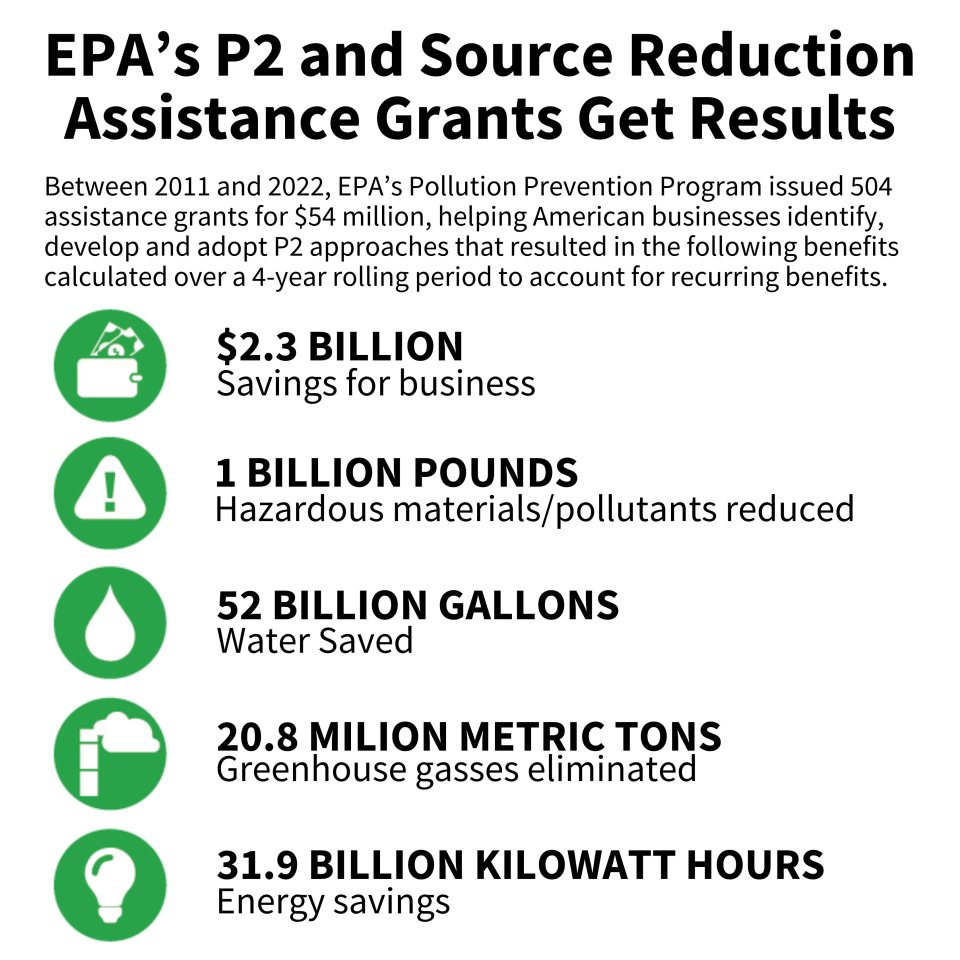Pollution Prevention Grants Overview
Pollution Prevention (P2) grants fund state and tribal programs to provide technical assistance to businesses to help them learn about and adopt source reduction practices (also known as “pollution prevention” or “P2”). EPA uses these grants to help businesses reduce the use or release of hazardous materials, the use of water, energy and other raw materials, while also lowering business costs.
As required by the Pollution Prevention Act of 1990, P2 grants are awarded to states, state entities (colleges and universities recognized as instrumentalities of the state), the District of Columbia, the U.S. Virgin Islands, the Commonwealth of Puerto Rico, any territory or possession of the U.S., and federally recognized tribes and intertribal consortia.
48 Recipients Selected for Nearly $19 Million in 2024-2025 P2 Grants
On Oct. 30, 2024, EPA announced the selection of 48 recipients across all 10 EPA regions totaling nearly $19 million in funding across two pollution prevention (P2) grant opportunities to support states and a Tribe in providing technical assistance to businesses to develop and adopt pollution prevention practices. More than $9.3 million in grant funding was made possible with no cost share/match requirement.
- Learn more about the $9.3 million Pollution Prevention Grant opportunity.
- Learn more about the $9.5 million Pollution Prevention Grant opportunity that is part of the traditional P2 grant program.
Benefits of P2 and Source Reduction Assistance Grants
For the first time, Pollution Prevention and Source Reduction Assistance Grants (between 2011 and 2022) have topped the one-billion-pound mark for reductions in hazardous materials and pollutants. In addition, cost savings of $2.3 billion resulted from companies buying fewer hazardous materials and shipping less hazardous waste, reducing regulated air emissions, treating less wastewater and buying less water, fuel and energy. Further success from these grants includes 20.8 million metric tons of greenhouse gas reductions and 31.9 billion kilowatt hour savings achieved mostly through energy efficiency and reduced use of energy.

The P2 grant results listed above do not include the additional results that occur when other businesses use the P2 approaches created and implemented through the P2 grant programs.
Sharing P2 Grant Lessons and Amplifying Results
The P2 approaches developed and implemented through P2 grants are documented and widely shared so that other businesses can replicate and adopt these practices. Check out a wealth of case studies on the P2 Hub Resources Center.
